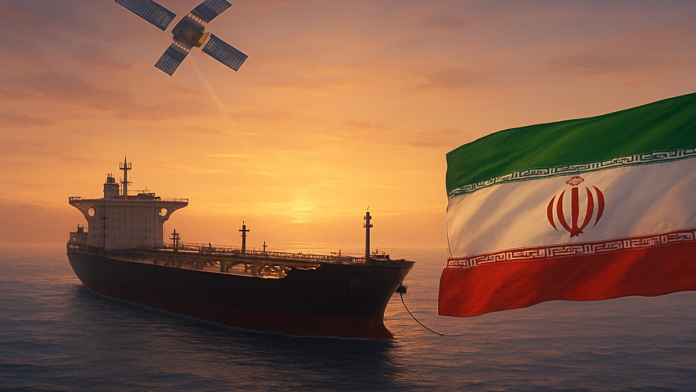New satellite images have raised concern after showing what appears to be Iran’s “shadow fleet” carrying out secret oil transfers in the South China Sea. These shadow fleets are believed to be linked to shipments heading toward China, suggesting that Iran may still be exporting oil despite strict trade restrictions. Authorities in the United States, Iran, and China have been contacted for comment.
Iran has been under strong U.S. sanctions to limit the money it earns from oil exports. Yet, demand for cheaper fuel has led some Asian buyers to continue sourcing oil from Iran, Russia, and Venezuela. To avoid detection, many Iran-linked tankers operate as part of a “shadow fleet,” often switching off trackers, changing names or flags, or using older vessels outside Western safety and insurance systems.
In China, smaller independent “teapot” refineries have shown interest in discounted Iranian oil. This has helped Iran continue selling oil even as official trade routes face tighter monitoring. Reports show Iran has been offering some of its largest discounts this year to attract Chinese buyers amid tougher sanctions on both Iranian and Russian oil.
What the Satellite Images Show
Recent satellite pictures showed at least five oil tankers positioned close together in the South China Sea. The spot was about 70 kilometres off Malaysia’s eastern coastline, near Johor. The vessels appeared to be involved in “ship-to-ship transfers”.
In October, the U.S. government announced new sanctions on companies and vessels linked to helping Iran move oil abroad. These measures targeted firms involved in transporting Iranian liquefied petroleum gas (LPG), nearly two dozen “shadow fleet” vessels, a crude oil terminal in China, and a small independent refinery in China. They were all suspected of helping in the movement of Iranian oil that bypasses sanctions.
According to a statement by the U.S. Treasury, Iran’s shadow fleet uses various tricks to hide oil shipments. These include switching off tracking signals, changing a ship’s name or flag, and transferring oil at sea with the help of tugboats to disguise the true origin of the cargo.
U.S. waiver saves India’s $500-million Chabahar project — vital trade lifeline with Iran continues
Statements and Responses
The U.S. Treasury has said that Iran’s shadow fleet relies heavily on support from companies based in China and other countries to move oil secretly across the world. The Treasury noted that shadow fleet often take place at sea in areas near Malaysia and Singapore, as well as in the Persian Gulf, to avoid detection.
Iran has strongly criticised the sanctions placed on its oil industry. It has repeatedly called these restrictions unfair and damaging to its economy, stating that it has the right to trade oil with other countries.
Malaysia, which recently signed a trade agreement with the United States, faces its own challenges. A recent report by the Institute of Strategic & International Studies (ISIS) Malaysia highlighted that the country’s maritime enforcement agencies have limited capacity. This makes it difficult to monitor or stop the increasing ship-to-ship oil transfers taking place near its coast, especially those linked to U.S.-sanctioned Iranian oil.
Malaysia’s long coastline, along with busy sea routes, makes it a preferred location for such activities because authorities cannot keep track of every vessel passing through its waters.
Ongoing Developments
Despite sanctions, Iran continues to find ways to move oil across the world. The suspected “shadow fleet” remains active along key Asian sea routes, and the South China Sea has become a frequent zone for such transfer activities.
Even as some buyers hesitate due to the risk of sanctions, the movement of these vessels shows that covert oil trade remains active. Satellite monitoring and maritime trackers are revealing more of these activities, giving the world a clearer picture of how these secret transfers are taking place at sea.


